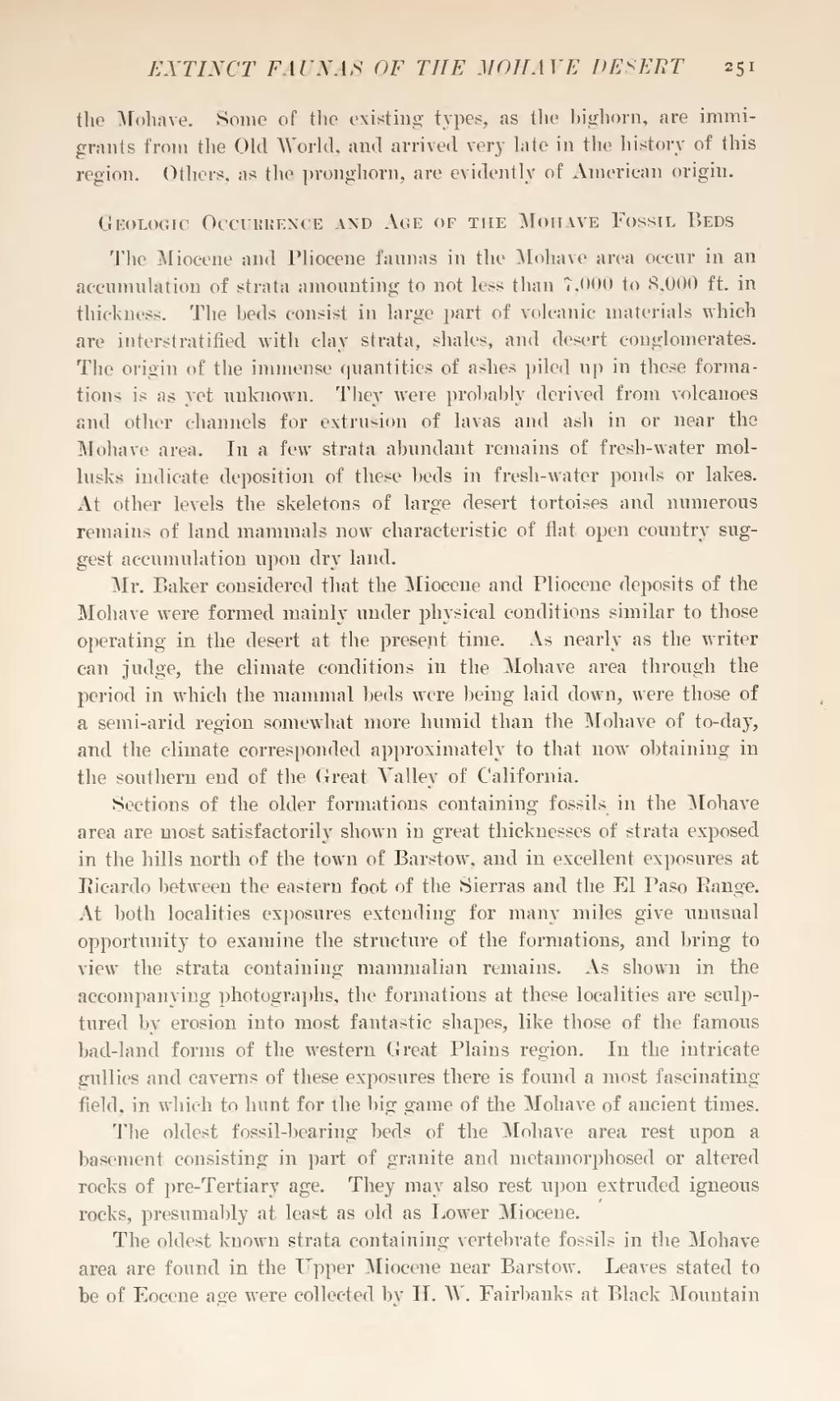the Mohave. Some of the existing types, as the bighorn, are immigrants from the Old World, and arrived very late in the history of this region. Others, as the pronghorn, are evidently of American origin.
Geologic Occurrence and Age of the Mohave Fossil Beds
The Miocene and Pliocene faunas in the Mohave area occur in an accumulation of strata amounting to not less than 7,000 to 8,000 ft. in thickness. The beds consist in large part of volcanic materials which are interstratified with clay strata, shales, and desert conglomerates. The origin of the immense quantities of ashes piled up in these formations is as yet unknown. They were probably derived from volcanoes and other channels for extrusion of lavas and ash in or near the Mohave area. In a few strata abundant remains of fresh-water mollusks indicate deposition of these beds in fresh-water ponds or lakes. At other levels the skeletons of large desert tortoises and numerous remains of land mammals now characteristic of flat open country suggest accumulation upon dry land.
Mr. Baker considered that the Miocene and Pliocene deposits of the Mohave were formed mainly under physical conditions similar to those operating in the desert at the present time. As nearly as the writer can judge, the climate conditions in the Mohave area through the period in which the mammal beds were being laid down, were those of a semi-arid region somewhat more humid than the Mohave of to-day, and the climate corresponded approximately to that now obtaining in the southern end of the Great Valley of California.
Sections of the older formations containing fossils in the Mohave area are most satisfactorily shown in great thicknesses of strata exposed in the hills north of the town of Barstow, and in excellent exposures at Ricardo between the eastern foot of the Sierras and the El Paso Range. At both localities exposures extending for many miles give unusual opportunity to examine the structure of the formations, and bring to view the strata containing mammalian remains. As shown in the accompanying photographs, the formations at these localities are sculptured by erosion into most fantastic shapes, like those of the famous bad-land forms of the western Great Plains region. In the intricate gullies and caverns of these exposures there is found a most fascinating field, in which to hunt for the big game of the Mohave of ancient times.
The oldest fossil-bearing beds of the Mohave area rest upon a basement consisting in part of granite and metamorphosed or altered rocks of pre-Tertiary age. They may also rest upon extruded igneous rocks, presumably at least as old as Lower Miocene.
The oldest known strata containing vertebrate fossils in the Mohave area are found in the Upper Miocene near Barstow. Leaves stated to be of Eocene age were collected by H. W. Fairbanks at Black Mountain
